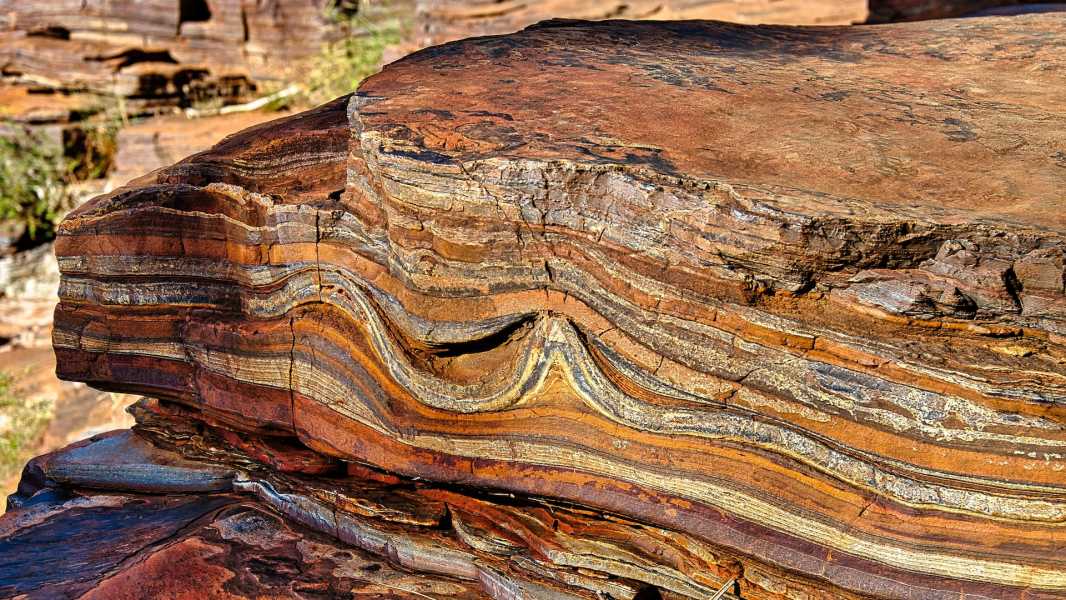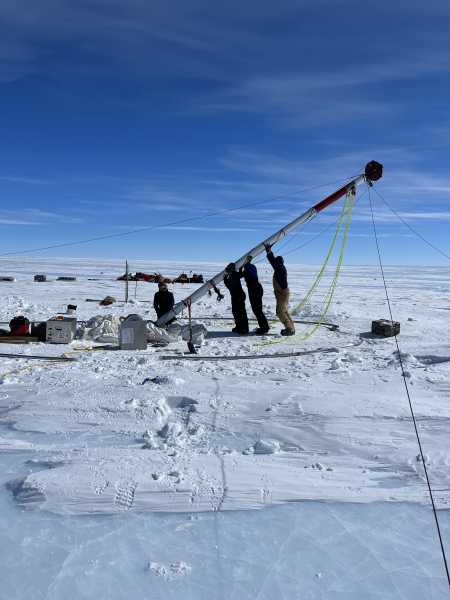
Were Earth's Oceans Ever Green? (Image credit: 100Y Design via Shutterstock)
Nearly three-quarters of Earth's surface is covered by oceans, making the planet appear as a pale blue dot when viewed from space. But Japanese scientists have made a compelling case that Earth's oceans were once green, according to a study published in the journal Nature.
The oceans' ancient appearances have been affected by their chemical composition and the development of photosynthesis. During my geology studies, I learned about the importance of a type of sedimentary rock known as the Banded Iron Formation in understanding the history of our planet.
The banded iron formations formed during the Archean and Paleoproterozoic eons, about 3.8 to 1.8 billion years ago. At that time, life was limited to single-celled organisms living in the oceans. The continents were barren landscapes made up of gray, brown, and black rocks and sediments.
Rainwater falling on continental rocks dissolved iron, which was then carried to the oceans by rivers. Other sources of iron were underwater volcanoes. This iron would soon become an important element.
The Archean Eon was characterized by the absence of gaseous oxygen in the Earth's atmosphere and oceans, but it was during this time that the first organisms that produced energy from sunlight emerged. These organisms used anaerobic photosynthesis, meaning that they could perform photosynthesis without oxygen.

Cross-section of ironstone beds in Karijini National Park, Hamersley Ranges, Western Australia.
This led to significant changes because the by-product of anaerobic photosynthesis is oxygen gas. This oxygen reacted with the iron in the seawater. Oxygen gas was only able to appear in the atmosphere once the iron in the seawater could no longer neutralize the oxygen.
Ultimately, early photosynthesis led to the “great oxidation event,” a landmark ecological turning point that opened the way for complex life on Earth. It marked the transition from a planet nearly devoid of oxygen to an Earth saturated with oxygen in the oceans and atmosphere.
The 'bands' of different colours in the banded iron formations reflect this shift, representing alternations between iron deposits accumulated in anoxic conditions and oxidised red iron.
The Case for Green Oceans
A recent paper on the green oceans of the Archean Eon notes that the waters around the Japanese volcanic island of Iwo Jima have a greenish tint associated with a form of oxidized iron
Sourse: www.livescience.com





